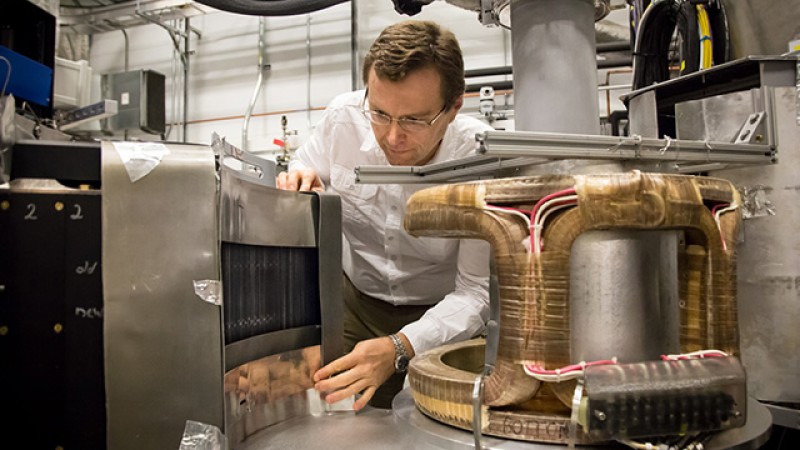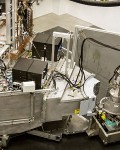After installing the new wide-angle super mirror array at SNS’s hybrid spectrometer, beam line 14B, HYSPEC is ready to tackle new problems using fully polarized neutron scattering.
Neutrons provide researchers a full multi-dimensional map, or survey, of all the excitations present in a sample. Using HYSPEC’s new capabilities is enabling Brookhaven National Laboratory physicist Igor Zaliznyak and his team to perform measurements of the inelastic spectra uniquely sensitive to magnetism in a particular iron-chalcogenide superconductor material.
A recent neutron scattering investigation conducted at ARCS, SNS beam line 18, of magnetic excitations in FeTe—a parent material of a family of iron-based superconductors—revealed that the material’s dynamical magnetism intensifies with increasing temperatures, an unexpected and quite unusual behavior. The experiment at HYPSEC allows Zaliznyak and his team to determine whether or not the scattering profile is truly magnetic in origin.
It’s, “a rare and unexpected phenomenon,” says Zaliznyak. According to him, a better understanding of this phenomenon could possibly lead to improved high-temperature superconductors, and at lower costs, findings that could benefit many areas of modern technology, ranging from more efficient electric power transmission to sensors used in resource exploration to improved MRI technology in the medical field.
“What we need to figure out is whether our understanding of these excitations is correct, and whether increased scattering is magnetic, nonmagnetic, or perhaps a mixture. But in order to do that we definitely need full polarization analysis capabilities, which is exactly what HYSPEC provides,” said Zaliznyak. “So it’s fortuitous that we have an instrument that we can address this question in a system that is of great current interest.”
HYSPEC instrument scientist Ovidiu Garlea, added, “Being able to perform polarized neutron studies was one of the primary missions of the HYSPEC instrument, and this upgrade will allow us to tackle problems that can't otherwise be solved. We have been overjoyed with the first tests of the polarization, and Igor’s experiment could be the ‘cherry on the top’ of a very successful commissioning. ”
Zaliznyak serves as the Chair of the Instrument Development Team executive committee for the HYSPEC instrument and was on the original design team.





